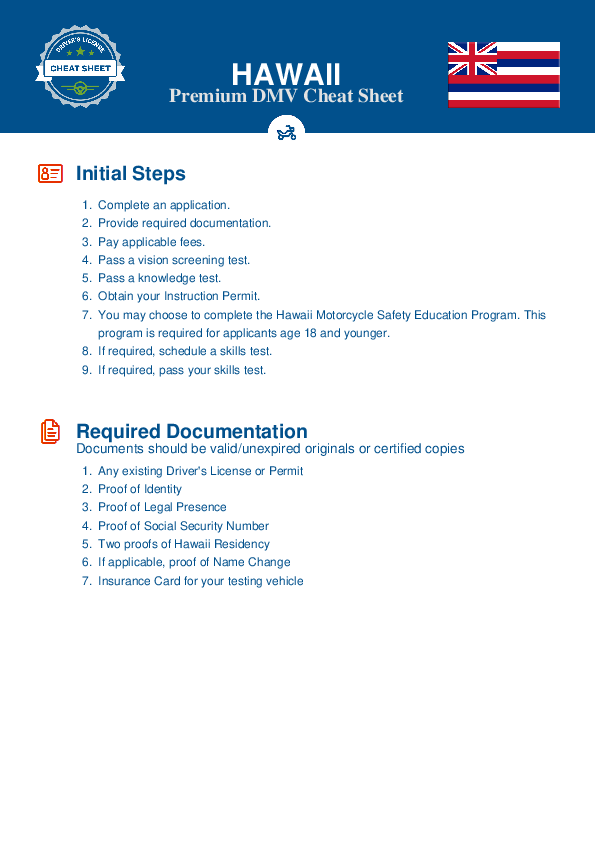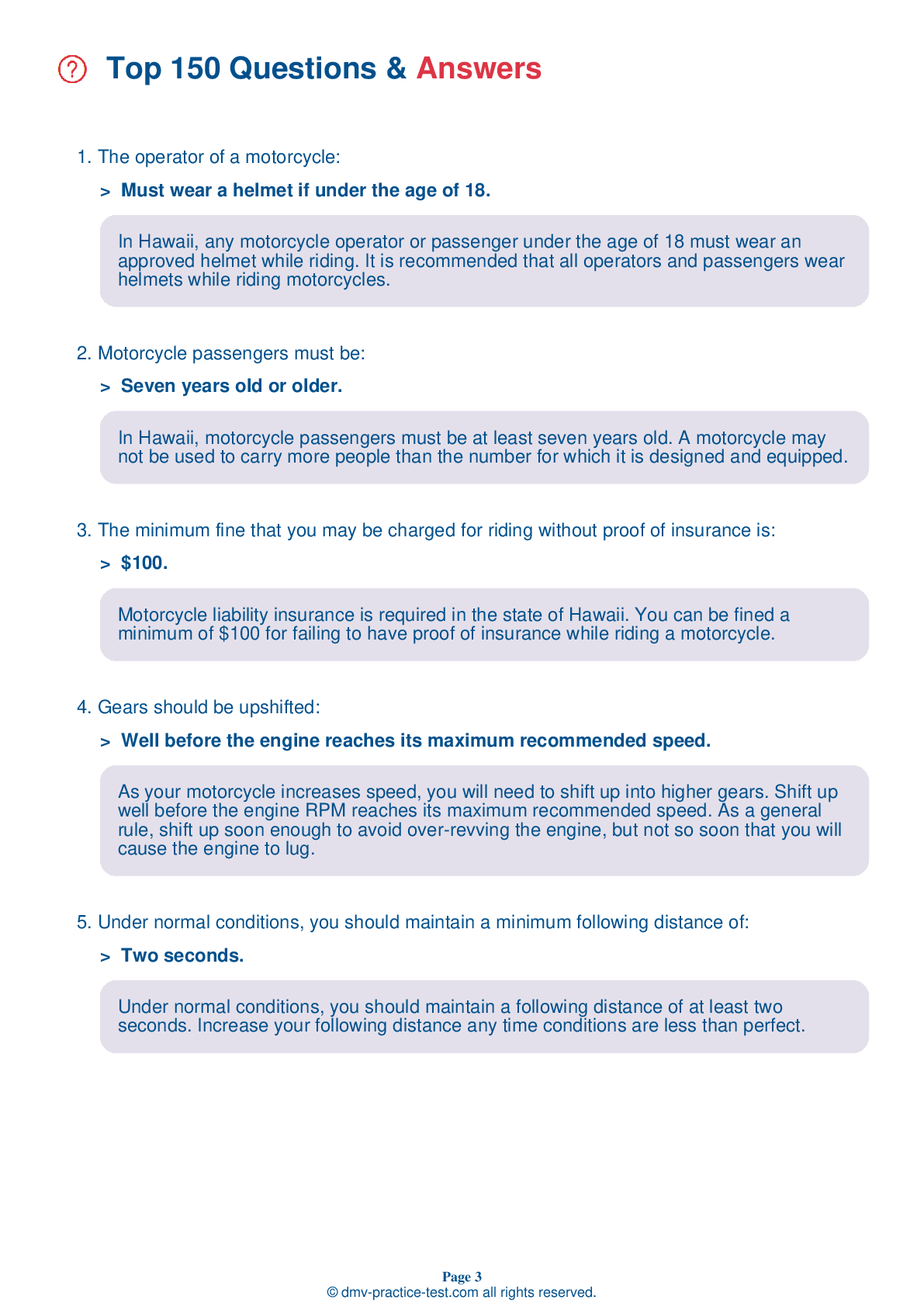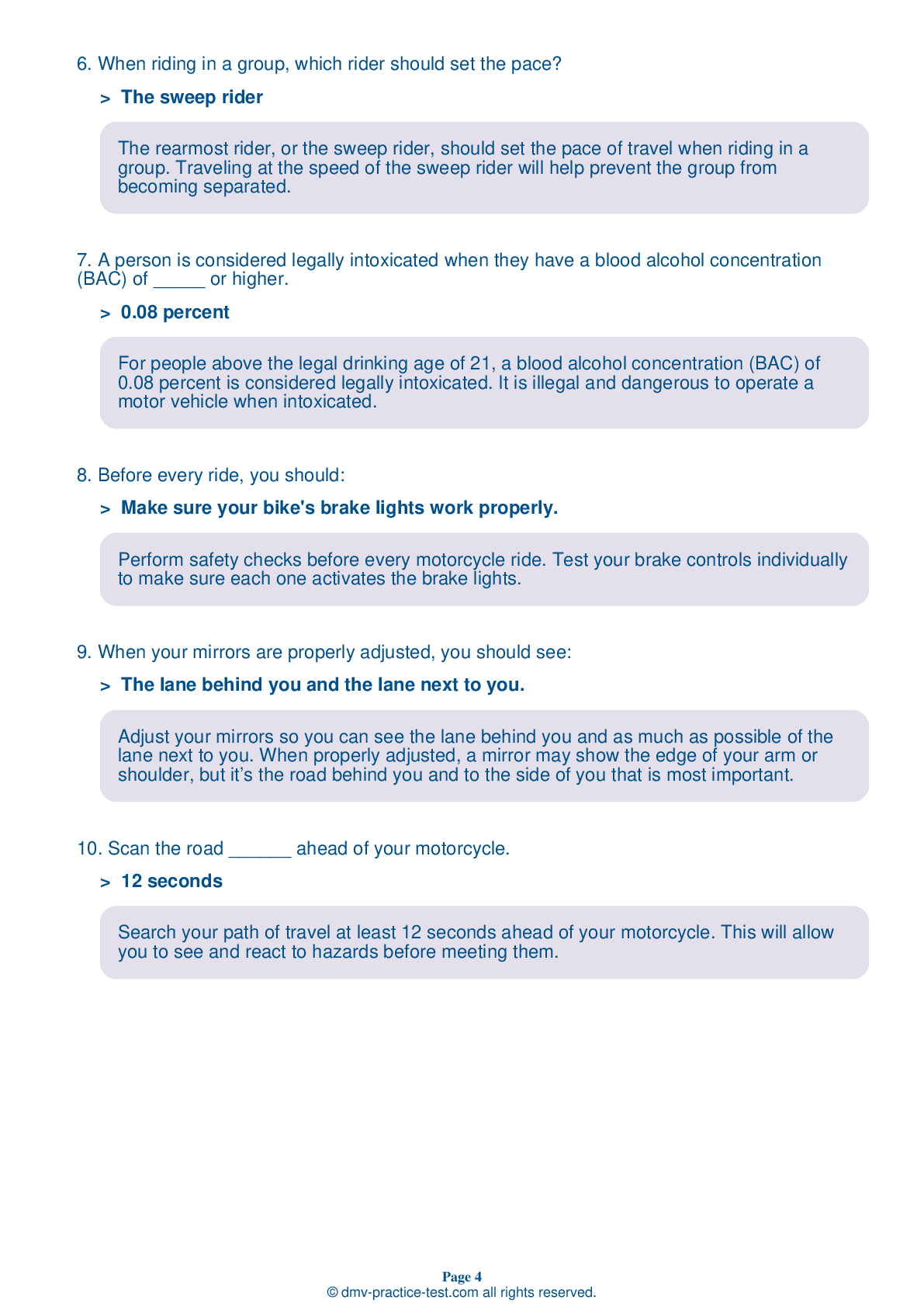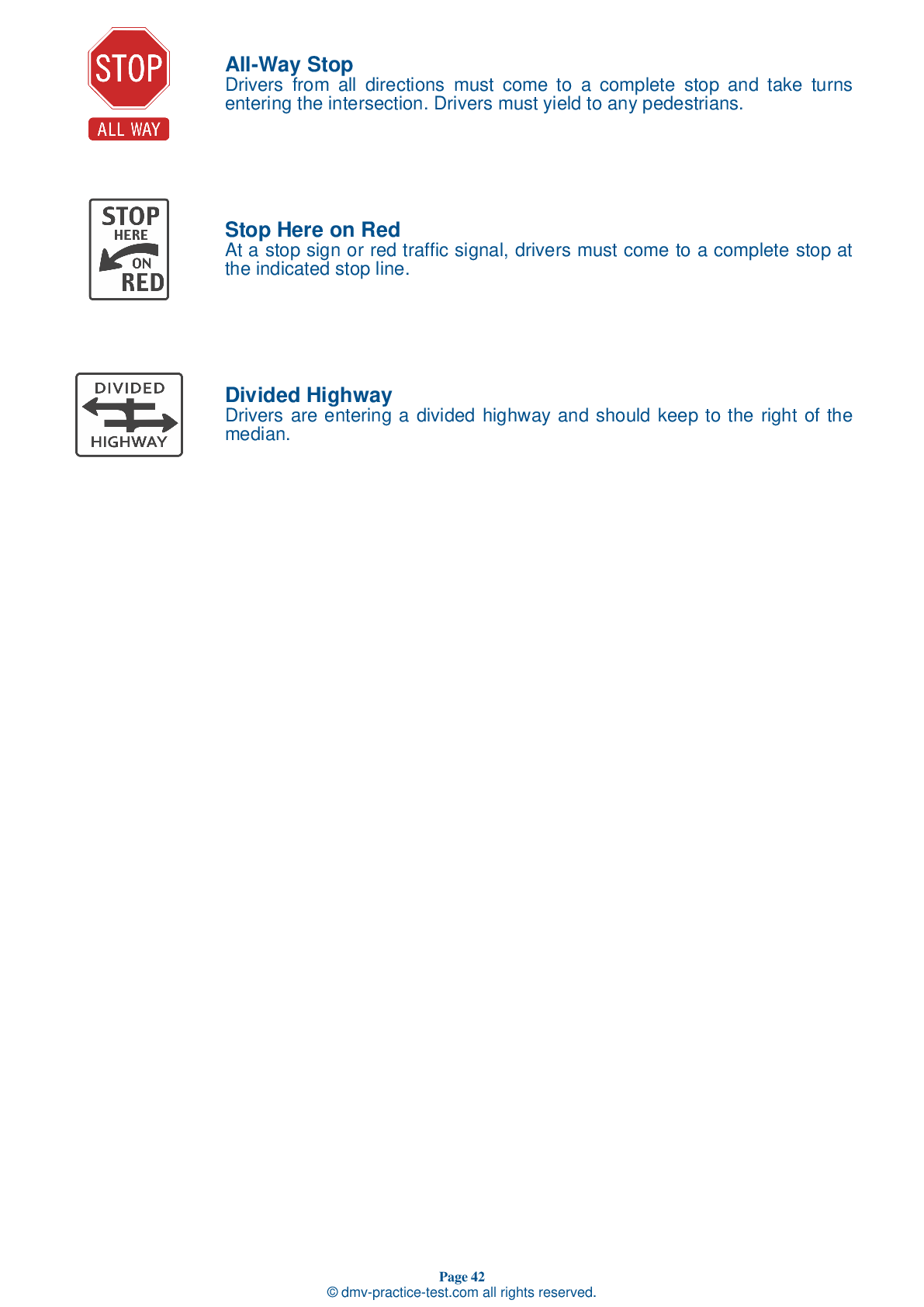Motorcycle Test | License HI 2025 | FREE Online Practice! #4 Page 3 of 4
Take this FREE motorcycle test (license in HI 2025) to check your knowledge of the road rules. To improve your results, download a motorcycle handbook online, study theory, and practice for free on our website. Still worried about how to get a motorcycle license in Hawaii in 2025? Check our website for more sample tests, train as much as possible, and boost your grades!
13 . A motorcyclist is well-protected if they are wearing:
For your protection while riding, it is best to wear a jacket and pants that cover your arms and legs completely. Boots or shoes should be tall and sturdy enough to cover and support your ankles. Footwear should have low heels that will not catch on the foot pegs or rough road surfaces. Gloves made of leather or another durable material will help protect your hands in the event of a crash while providing you with an improved grip on the controls.
14 . What could happen if a motorcyclist takes a turn too fast?
Riders often try to take curves or turns too fast. When they can’t hold the turn, they end up crossing into another lane of traffic or going off the road. Riders also often overreact and brake too hard, causing a skid and loss of control.
15 . A skidding rear tire:
A skidding rear tire is a dangerous condition that can result in a violent crash and serious injury or death. Too much rear brake pressure can cause the rear wheel to lock. As soon as the rear wheel locks, your ability to change direction is lost. To regain control, the brake must be released.
16 . If you are riding behind a car, you should:
When riding directly behind a car, it is usually safest to ride in the center portion of your lane. If you are riding in the center of the lane, you are most likely to be visible in the rearview mirror of the vehicle ahead. Most drivers check their rearview mirror more frequently than they check their side mirrors.
17 . When passing, you:
Passing must be completed within posted speed limits. Only pass another vehicle where it is safe and legal to do so.
18 . The minimum fine that you may be charged for riding without proof of insurance is:
Motorcycle liability insurance is required in the state of Hawaii. You can be fined a minimum of $100 for failing to have proof of insurance while riding a motorcycle.
See the exact questions that will be on the 2025 Hawaii DMV exam.
99.2% of people who use the cheat sheet pass the FIRST TIME
Jeneen was tired of paying $5/gallon. She got herself a scooter that required the motorcycle license. She studyed the motorcycle test cheat sheet and passed her test the next day!
Christopher tells us how he knew nothing prior to obtaining the motorcycle study guide, and he only got one question wrong because he clicked on the wrong answer by mistake.



